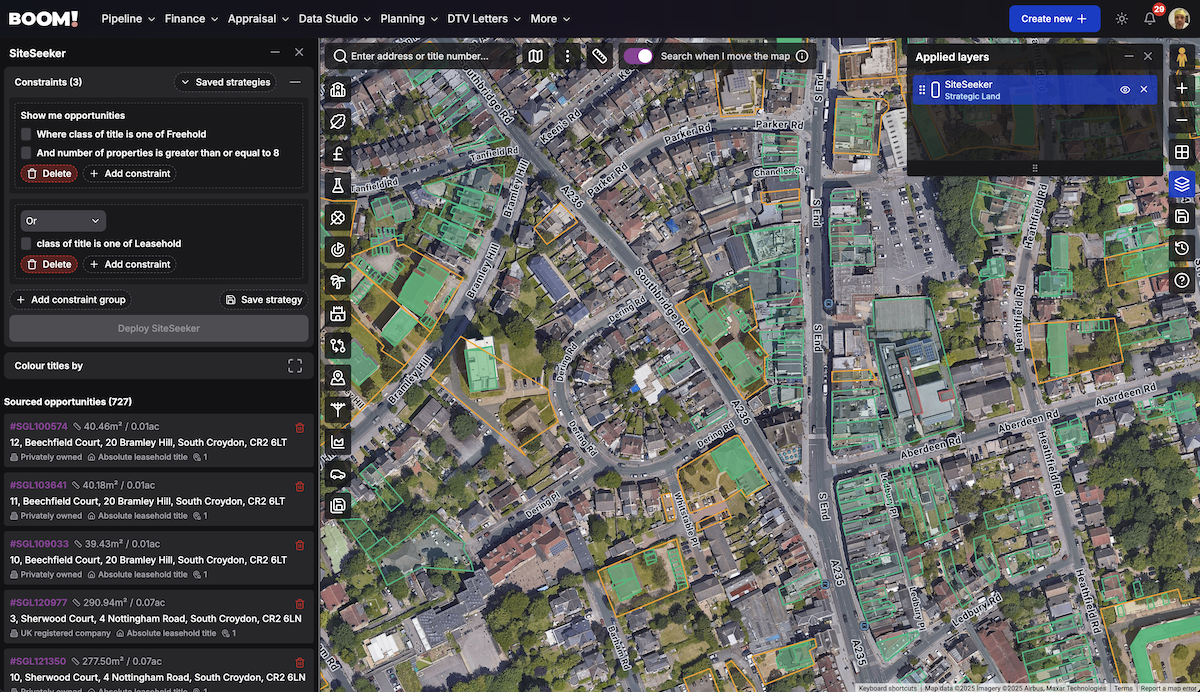Unlocking Airspace Potential: A Developer's Guide







In June 2020, a significant update to The Town and Country Planning (General Permitted Development) (England) Order 2015 (GPDO) introduced Part 20, paving the way for constructing new flats in the airspace above various buildings across England without the need for traditional planning permission.
This landmark change presents considerable opportunities for developers and landlords to maximize their existing property assets, both residential and commercial. Permitted development rights streamline the process, offering a faster route to unlock the untapped potential of buildings, particularly in bustling urban environments.
Understanding Airspace Development
Airspace development essentially involves building new homes by utilising the 'air rights' above existing structures. Typically, this means adding up to two stories to the roof of a building, effectively creating an upward extension.
Part 20 of the GPDO specifically allows the creation of new flats in the airspace of diverse commercial and residential properties, thereby increasing housing options within established built-up areas.
Key Permitted Development Criteria
Several crucial criteria govern airspace development under Part 20 of the GPDO:
The original building must have at least three stories above ground level.
For staggered buildings, development is permitted on the higher section.
Newly constructed flats must have a maximum floor-to-ceiling height of 3 meters.
All new units must be designed as self-contained flats.
The overall roof height of the renovated building cannot exceed 7 meters above the highest point of the existing roof.
Upon completion, the total height of the development (excluding plant structures) must not exceed 30 meters.
The completed development must not have any visible external support structures.
These regulations encourage developers to look upwards and explore the often-overlooked potential residing in the airspace above existing buildings.
Permitted Development Rights for Airspace: Classes ZA, A, AA, AB, AC & AD
The GPDO outlines six distinct permitted development types that facilitate airspace development:
Class ZA: Allows demolition and replacement of a commercial building or a block of flats with a new block of flats or a detached house within the original footprint, including an upward extension of up to two additional stories.
The new building cannot exceed a 1000 sqm footprint or 18 meters in height.
Class A: Permits the addition of two new stories of flats above existing detached blocks of flats.
Class AA: Allows the construction of up to two new stories of flats above detached commercial or mixed-use buildings.
New developments under this class can reach a height of 30 meters, with a maximum additional height of 7 meters above surrounding roofs.
Class AB: Enables the creation of new flats on terraced or semi-detached commercial buildings, even those already containing flats.
This includes the potential to add one story of new flats to a single-story row of shops.
Alternatively, up to two stories can be added to rows of shops that already have flats or retail space above.
New developments under this class can reach a height of 18 meters, considering the height of adjacent rooftops.
Class AC: Permits the construction of new flats in the airspace above terraced houses, including semi-detached properties.
Class AD: Allows the construction of new flats in the airspace above detached houses.
It is important to note that while each PDR Class has specific criteria, none of these permitted development rights apply to Article 2(3) Land, which includes conservation areas. Furthermore, all these classes restrict the future creation of Houses in Multiple Occupation (HMOs) without obtaining full planning permission and do not apply to properties that are already HMOs.
Finding Airspace Opportunities with BOOM!
BOOM! users can easily find suitable Class AA, AB, AC, AD, and A sites in any area for airspace opportunities. Simply apply the appropriate constraints to our site sourcing tech SiteSeeker to generate a list in your areas of interest.
Contact us for assistance with custom strategies to achieve the desired results.